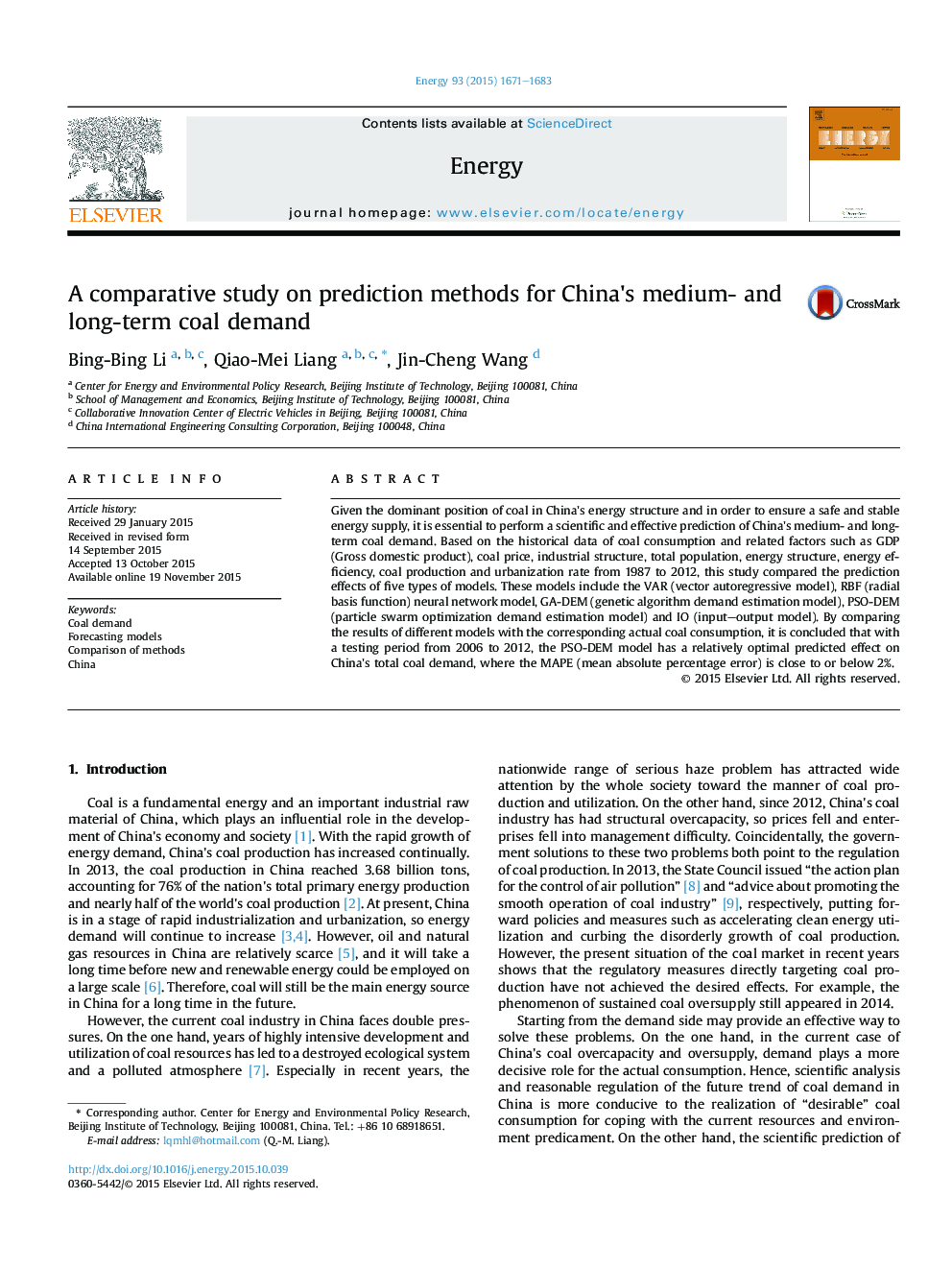| Article ID | Journal | Published Year | Pages | File Type |
|---|---|---|---|---|
| 1731610 | Energy | 2015 | 13 Pages |
•The prediction effects of five methods for China's coal demand were compared.•Each model has acceptable prediction results, with MAPE below 5%.•Particle swarm optimization demand estimation model has better forecast efficacy.
Given the dominant position of coal in China's energy structure and in order to ensure a safe and stable energy supply, it is essential to perform a scientific and effective prediction of China's medium- and long-term coal demand. Based on the historical data of coal consumption and related factors such as GDP (Gross domestic product), coal price, industrial structure, total population, energy structure, energy efficiency, coal production and urbanization rate from 1987 to 2012, this study compared the prediction effects of five types of models. These models include the VAR (vector autoregressive model), RBF (radial basis function) neural network model, GA-DEM (genetic algorithm demand estimation model), PSO-DEM (particle swarm optimization demand estimation model) and IO (input–output model). By comparing the results of different models with the corresponding actual coal consumption, it is concluded that with a testing period from 2006 to 2012, the PSO-DEM model has a relatively optimal predicted effect on China's total coal demand, where the MAPE (mean absolute percentage error) is close to or below 2%.
